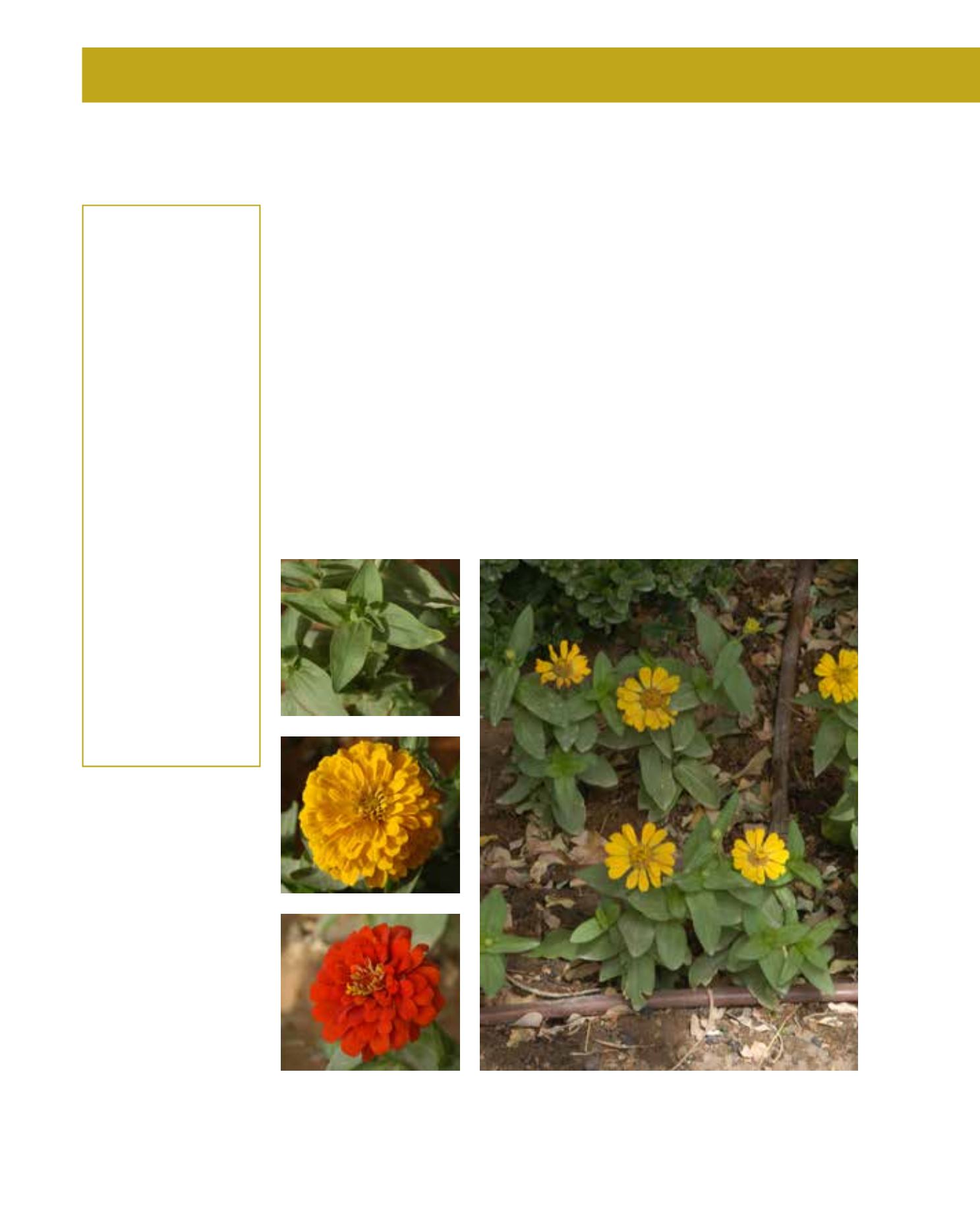

GENERAL
Origin
:
sub-tropical,
tropical
Vigour
:
fairly fast
growing
Humidity
:
very arid, semi-
arid, semi-humid,
very humid
Propagation :
direct sowing,
sowing and
pricking out
Maintenance :
moderate
CONDITIONS
Urban climate :
resistant
Dessication :
vulnerable
Stagnant water :
vulnerable
Irrigation
:
high
Salinity/ppm :
moderate (2000
ppm)
Hardiness
:
-3°C
SHAPE
Type
:
annual
Height
:
0.3 m-1 m
Spread
:
0.1 m-0.25 m
Foliage
:
deciduous
FLOWER
Colour
:
yellow, orange,
red
Size
:
2 cm
Period
:
April - November
FRUIT
Type of fruit :
achene
Fruit size
:
0.5 cm
Zinnia elegans is commonly known as Zinnia. Its area of distribution lies in central to tropical
America, in areas with tropical to subtropical climates. Zinnia elegans is an annual herb. It grows
to between 30 cm and 1 metre high, with a width of up to 25 cm. It is fairly fast growing. The
deciduous foliage is green, and the leaves are entire, with an ovate to cordate shape. It develops 2
cm flower heads composed of tongue-like petals. The colours are highly variegated, ranging from
yellow to orange and red. Flowering continues many months up to the time of frost. The fruits
are achenes. Propagation is by direct sowing or self-seeding. Pruning requirements are minimal,
while irrigation requirements are moderate. Zinnia elegans does not appreciate stagnant water or
high salinity, but thrives in sunny locations. In landscape design, it is useful as an edging plant,
groundcover, grouped or massed planting. This Zinnia is an attractive ornamental plant that cre-
ates appealing effects in urban design, as park planting, in pedestrian precincts, in small managed
roof gardens, in containers and in private gardens. In Arriyadh, Zinnias make a very colourful
winter display; they are often planted from November onwards in the Diplomatic Quarter, for
example.
319
Zinnia elegans,
Asteraceae
Zinnia
















